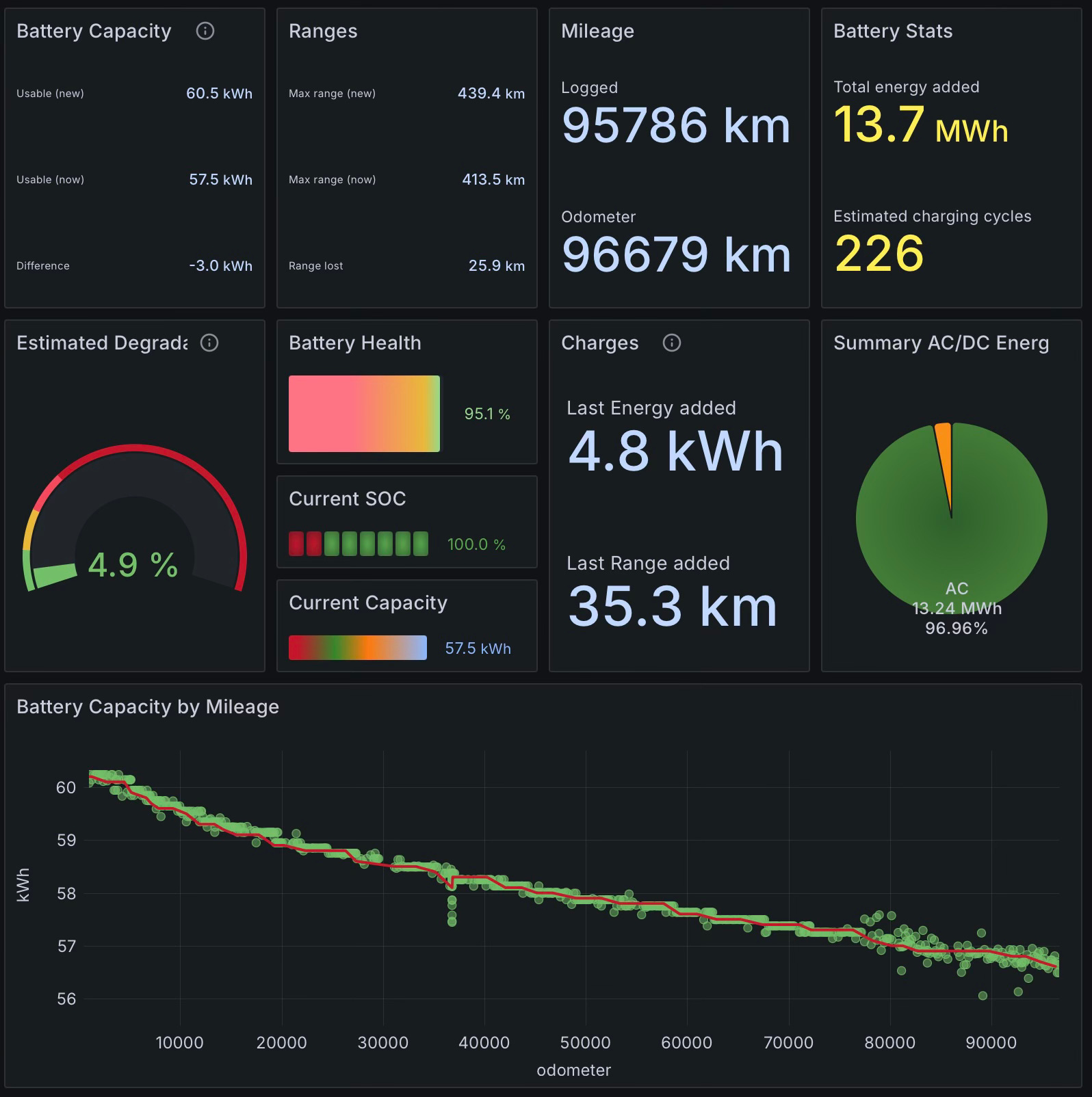…Or any other Electric Car…or at least, that’s what one of my co-workers told me last week. We’d been discussing the state of new cars, how expensive they’ve become and the pros and cons of electric cars. Being the only person in the room to own both a Battery Electric Vehicle and a Plug-in Hybrid Electric Vehicle, I mentioned my battery degradation statistics for the Tesla Model 3. It’s now approaching 3 years old and has almost clocked up an even 100,000 kilometres (62,000mi) and I’ve been tracking the car using my own Teslamate instance for almost that entire duration.
In a recent update the Teslamate Dashboard list had added a new Battery Capacity display that was specifically tailored for those owners with LFP Battery chemistries, like my car has.

When I told the group my car had only lost 5% of its range in the last 100,000k’s they were a mixture of, “shrug, whatever” and aghast. “My ICE Car still has the same range as when I bought it and I’ve run it for twice that distance!” said one of them.
The average lifespan of a petrol engine is about 300,000k (~200,000mi) before it needs either reconditioning or replacement. Practically no Diesel engines are naturally aspirated anymore and adding a Turbo-charger shortens the lifespan of a diesel but they’re still better than petrol regularly reaching 500,000k (~300,000mi).
Quotes vary from car to car and engine size and type as well, but a recent polling of sites averages between $4k-$5K AUD to recondition an engine of either type. For those unaware, reconditioning involves reboring the cylinders in the engine block, upsizing the pistons/rings and after a few adjustments…away we go.
Reconditioned engines won’t last quite as long as the original and some modern engines can’t survive a second rebore as the wall thickness of modern engines aren’t as chunky as they used to be. That said, you can go for a second or third time but it depends on the engine and how bad the rebore was. Each time you do this you lose some efficiency but get to keep the car. Failing rebores you could replace the engine but that’s subject to finding a suitable replacement.
I once drove a car with 300,000k on the clock and gradually at first, then at an alarming rate the engine started losing power as it crossed 320,000k and then finally would barely move at 330,000k. The engine simply couldn’t hold compression. It was a company vehicle and the owner opted to sell it for scrap.
To summarise I don’t agree with the mentality of the person that said, “You convinced me not to buy a Tesla…” (or any Electric Vehicle) due to battery degradation. How’s that exactly?
The rate of battery degradation for LFPs is known to be relatively linear, hence projecting forward assuming 100,000k/3 years and 5% loss per 100,000k and let’s say any range less than 200klm makes the car unusable, it will take approximately 30 years before the Tesla becomes “unusable” by that metric, although it would still be fine for a daily commute for myself personally, even with that range. That would put the clock at 1 million kilometres (620,000mi) for which a petrol car would need two reconditions during that time and third to keep running beyond that.
If a new LFP battery still costs $22,000 AUD in 30 years I’ll be shocked, but given that 80% of that cost is the battery itself and the rest is labour, it’s fair to say it will have dropped below $15,000 AUD in total by then, judging by the cost/kWh for LFP batteries over the past five years alone, and graciously assuming a flattening of cost in 20 years time. At worst this is effectively the same equivalent cost of ownership as an equivalent petrol ICE vehicle, and unlike an ICE vehicle an EV is still perfectly drivable the whole time.
For the record I went though all of this detail with the person in question, but I think it comes down to a different way of thinking about the problem. Electric Cars are the immediate future for vehicles and they will mostly displace ICE vehicles, but it’s going to take some time for some people that are deeply entrenched in the “that’s just the way it is” mindset about what vehicle cost of ownership must be, before they can embrace what it can be.